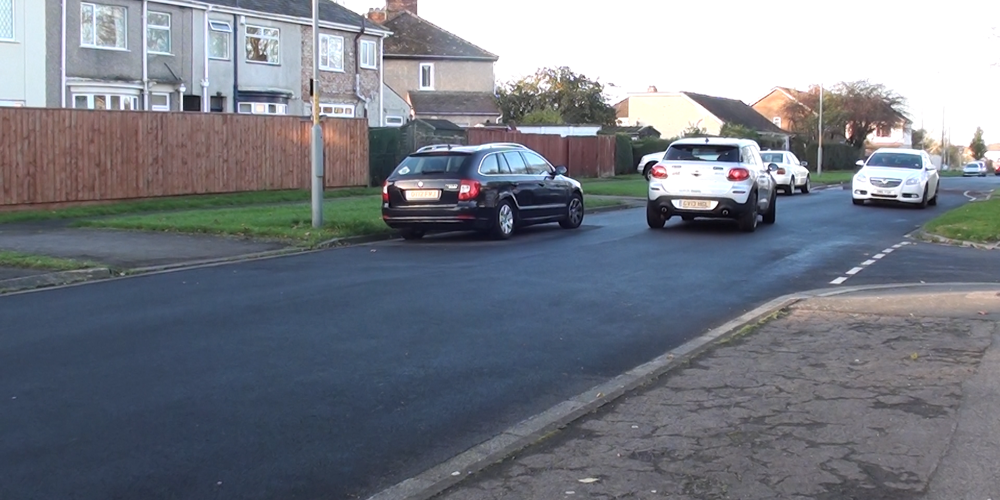
When you are driving along any two-way road, and another vehicle approaches, you 'meet' each other and then 'pass'.
As long as the road is wide enough and you are a safe distance apart, this poses no problems for either driver - it happens millions of times on millions of roads every day without incident.
However, during your training, the term 'meeting' will generally be reserved for situations where the gap you are approaching isn't big enough for two vehicles to fit through safely and where one driver has to give way.
 There are lots of 'meeting situations', including:
There are lots of 'meeting situations', including:
Road works
Parked cars
Traffic calming bollards
Broken down vehicles
Narrow country roads
The one thing that all 'meet' situations share is that the available road space is reduced so that there is not enough room for two cars to pass each other safely at 'normal driving speed'.
You need to take special care to meet vehicles safely in narrow situations. However, having said this, just like on wider roads, meet situations happen millions of times on millions of roads every day without incident!
In this lesson, we will consider the basics regarding 'meeting' and suggest a simple routine that you can try to help with the decision-making.
For lots of learning to drive videos see the Driving Test Success practical driving app. (Google Play | App Store - appstore practical videos available as an in app purchase in the 4 in 1 kit)
During your driving test, you will encounter several 'meeting' situations, ranging from streets lined with parked cars to places where signs specifically show who has priority (on narrow stretches of road or in traffic-calming situations).
The examiner will be watching to ensure that you are fully aware of what is happening around you, correctly communicating with other drivers and controlling the car without causing other drivers to take evasive action.
The examiner will also be expecting you to take opportunities to 'make progress' without being hesitant - although courtesy and consideration for other road users is an essential factor you must also recognise when others are allowing you the opportunity to proceed.
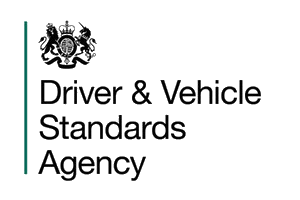
Things that examiners consider:
Use of mirrors on approach
Signal timing and whether signals are given correctly
Road position
Control of speed
Correct assessment of the situation
Correct action on road signs or markings (in traffic-calming situations)
Safe and appropriate action to deal with the hazard
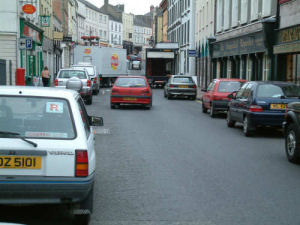
When you are approaching a narrow section of road and faced with a vehicle coming the other way, you will need to decide whether to carry on or give way.
As a general rule, you will give way if the obstruction is on your side of the road. This is because you need to cross into the approaching driver's road space to proceed.
But sometimes, the other driver may slow down or stop and give you priority, so you must always stay alert to the developing situation ahead.
If the obstruction is on the opposite side of the road, you should have priority – BUT (a great big but!), don't assume that the other driver will give way. Always drive at a speed that will enable you to stop safely if the other driver comes through.
If there are obstructions on both sides, you must slow down and be prepared to give way. Usually, the driver who arrives at a gap first will go through first, but there are no hard and fast rules.
Usually, deciding to wait or proceed if the road is clear will be reasonably straightforward. However, there will be occasions when the situation is unclear.
 You can use the' don't know' rule when you are not 100% certain of the action to take. Skilled drivers always use the don't know rule, even though they might not be conscious of doing this and might never have been taught it.
You can use the' don't know' rule when you are not 100% certain of the action to take. Skilled drivers always use the don't know rule, even though they might not be conscious of doing this and might never have been taught it.
When learning to drive, it's easy to fall into the trap of thinking that you should know what to do to deal with developing situations – in truth, it's the skill of being confident about 'don't know' that keeps experienced drivers alive!
It's perfectly OK to unsure about whether to wait or go when approaching a situation, but as long as you follow the 'don't know' rule, you'll be OK. The rule is quite simple.
When you recognise that you're getting a feeling of 'don't know' - "I'm approaching the situation, and I'm not 100% sure what's happening or how I should respond" – check your mirrors and reduce your speed (immediately – don't wait!). The degree to which you reduce speed will depend on how strong the 'don't know' feeling is.
Reducing speed creates more time and space to think about the developing situation. Keep reducing your speed until you feel confident about the action you need to take; give way or proceed.
And here's the easy bit...
When you are approaching a meeting traffic situation (or any other situation), and you realise that the 'don't know' feeling is still strong, the decision will be made for you - don't go.
So the rule is simple, 'if you don't know, don't go'.
You will usually decide to stop and wait a few car lengths before you arrive. This allows plenty of space for other drivers to come through and leaves you plenty of room to pass any obstruction.
By dealing with what might seem to be a negative feeling (the feeling of "I don't know what to do") in the way described above, you turn it into a positive driving skill that can help to keep you safe.
As mentioned, the decision-making process of skilled drivers, often an unconscious process, is watching situations as they develop, asking themselves the question 'what if?' and then adjusting speed and position accordingly - stopping if they don't know.
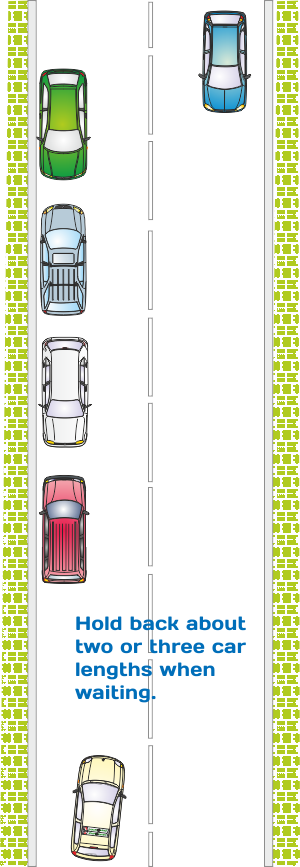
Use your mirrors as soon as you see an obstruction ahead (on either side).
Whether or not the road is clear, you will almost always need to change your speed, position (or both). Before doing this, you need to know how your actions will affect following drivers - the information from your mirrors will help you decide what to do.
Next, consider a signal.
You might need to signal to pass the obstruction; however, in most cases, your road position will be enough to tell drivers behind that you are moving out.
When considering a signal, ask yourself if the driver (or motorcyclist) behind might be thinking of overtaking - if so, you will definitely need to signal.
On some occasions, a signal might help approaching drivers or pedestrians.
A reason not to signal!
Repeated signals can lead to confusion on roads with many parked vehicles or other obstructions.
If, after signalling several times to pass a parked vehicle, you then signal to turn right, the driver behind might not react, thinking that you are simply passing another parked car.
After checking your mirrors and signalling (if required), consider the position you need to take up.
Whenever possible, you should aim to time your approach so that you arrive when the road is clear. Do this by adjusting your speed as you approach.
Move out early if you are not stopping; avoid getting too close to the obstruction if you stop. If you stop too close, your view ahead will be limited, and other drivers may be confused into thinking that you intend to park behind the obstruction.
Your instructor might refer to the 'Hold-back Position'. This is around two or three car lengths back from the obstruction. This distance is a good guideline when first dealing with meeting situations. However, as with all driving, you need to use a little common sense - sometimes the gap will be smaller, other times bigger.
When waiting, it's a good idea to use the handbrake (Why do you think this might be?).
If in doubt, you must stop until you have a clear idea about what to do. Take care when moving off - you will need plenty of observation; this is because when you stop to give way, you will usually be well away from the kerb, and cyclists might pass on the left.
Also, the fact that your car will be at a slight angle means that you will have to make thorough blind-spot checks, perhaps with a couple of glances back, because your mirrors will not enable you to see quite as far back along the road.

When other drivers decide to give way to you, they will sometimes flash their headlights. If they do, remember these rules for responding:
Is the flash for me?
Is the driver giving way or coming through?
Does anyone else think that the flash is for them?
It's good to be courteous, but flashing headlights can sometimes cause more problems than they solve. Our advice (as above) is be extra careful when others flash you and don't be a 'flasher' yourself.
By all means, be courteous and give way to others but let them make up their own minds whether or when to come through. You can find lots more information about at the in the DriverActive Driver's Area.
Here's another easy rule for you to remember - 'Less space, less speed'.
If you always expect problems, especially around parked cars, you'll always be ready to deal with them. Doors can open, children might run out, and vehicles can move off without signalling. Make sure you are going slow enough to stop safely; stopping might be the only way to avoid the problem when cars are approaching.
Another vital point to remember when meeting approaching vehicles in narrow gaps is that other drivers might not feel as confident as you do about judging the space. If you drive through too quickly, you could cause an approaching driver to panic.
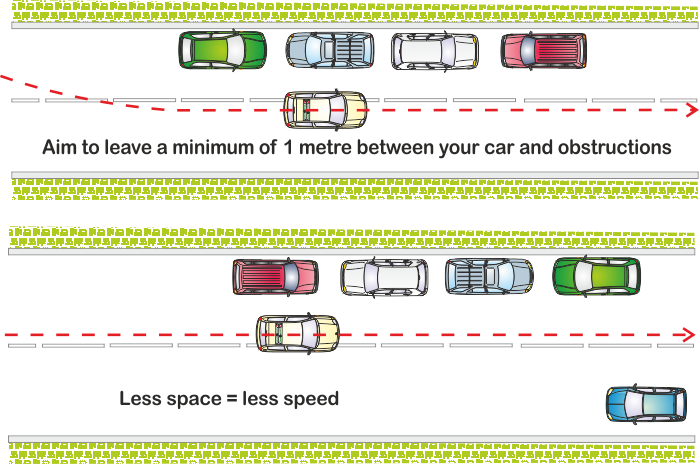
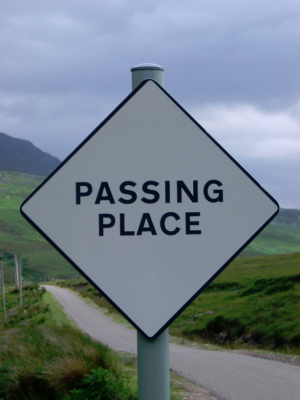
You need to take extreme care when meeting other traffic on narrow country lanes.
Sometimes there won't be anywhere to pull in, and the only option will be for one driver to reverse to a space. On other occasions, you might be able to put two wheels onto the verge, but be careful and ensure that the ground is firm enough. Otherwise, you could end up getting stuck in the mud.
Some country lanes have 'passing places'. These are places where you can allow other vehicles to pass safely.
If the first passing place is to the left, pull in to allow approaching vehicles to come through.
If the first passing place is on the right, carry on to the start of the passing place and then stop in your normal driving position, allow the approaching driver to pull into the passing place and then drive through.
Usually, you shouldn't pull into passing places on the right but use common sense - for example, if the approaching vehicle is a large truck, a car with a caravan, or similar, and it's too long to fit into the passing place it might be best for you to pull in. If you choose to do this, make sure that the other driver knows what you are doing, give a signal and, if necessary, stop before pulling into the space – this will give the approaching driver time to work out what's happening.
Some traffic-calming systems reduce the road width so that there is only enough space for one vehicle at a time. The narrow section are often controlled with signs showing who has priority. It's important to understand the meaning of the signs.
Click/Tap on each of the signs below for an explanation of what they mean.

Click here to complete the quiz for this lesson
(The page will open in a new window/tab)
You will find references for the answers in this lesson.
You can check your answers as you go along, or complete the full quiz before checking.
Leaving the check to the end is a good way to test yourself.
When you check or review your answers you will get a brief explanation of the answer.
Good Luck!

This is an information sign.
The sign indicates that you have priority and that the approaching drivers should give way to you, however, you must still drive in a safe and responsible way. If there are drivers who have already entered the narrow area allow them to pass through fully before you continue.
Also remember that other drivers don't always follow the rules - if an approaching driver 'pushes' through this sign does not give you the right to drive in a confrontational manner and risk a collision!

This is a compulsory sign. You must give priority to approaching vehicles. Failure to comply with the sign is an offence.